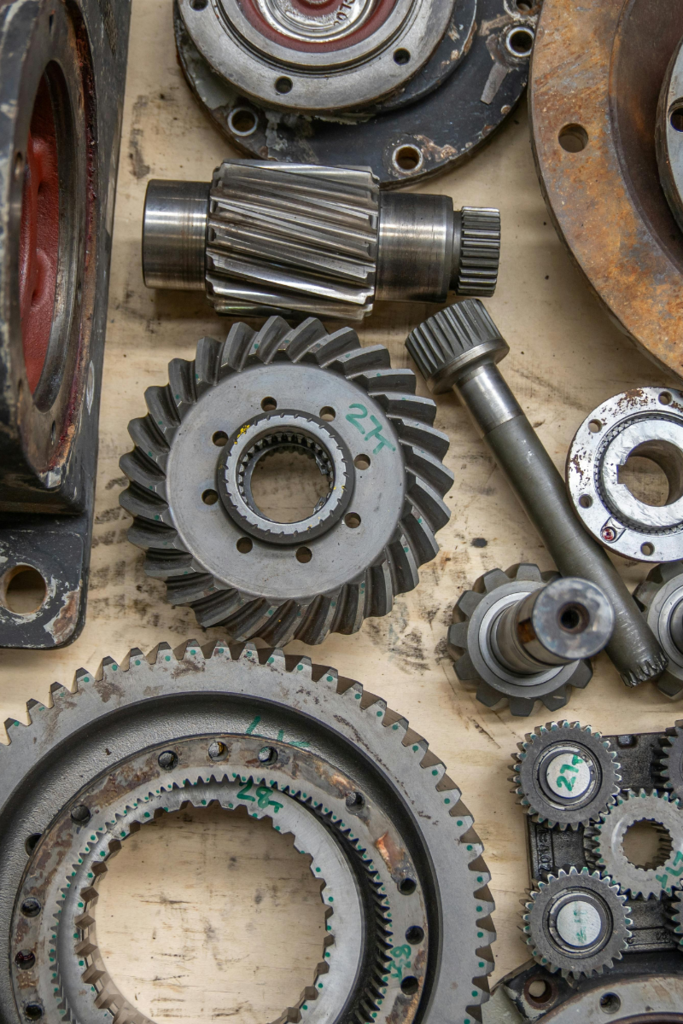Let Wrench Blisters Garage Extend The Life of Your Car!
If you want to keep your car running smoothly for years to come, following a reliable vehicle maintenance schedule is one of the smartest things you can do.
At Wrench Blisters Garage, your trusted Tallahassee mechanic, we specialize in honest, expert service backed by over 20 years of hands-on experience. Whether you’re driving across town or making daily commutes, this simple checklist can help prevent costly repairs down the road.
Here’s a comprehensive, easy-to-follow maintenance schedule for most personal vehicles.
Always refer to your vehicle’s owner’s manual for model-specific guidelines, but this plan will give you a solid foundation for auto repair in Tallahassee and beyond.

Monthly Maintenance Checklist
Performing quick checks each month helps catch small issues before they become big repairs.
1. Check Tire Pressure
Tire pressure affects fuel efficiency, safety, and how your car handles. Use a tire pressure gauge and check against the PSI listed inside your driver-side door.
Properly inflated tires wear evenly and help avoid blowouts on Tallahassee roads during our hot summers.
2. Inspect All Exterior Lights
Make sure your headlights, brake lights, tail lights, and turn signals are functioning.
Replacing a bulb is often a quick fix and keeps you safe (and ticket-free).
3. Look for Fluid Leaks
Check under your car for any signs of oil, coolant, or transmission fluid leaks. Leaks can point to worn seals or failing gaskets, something our team at Wrench Blisters Garage can help identify and fix.
4. Test the Horn and Wipers
Both are simple but important for safety. If your wipers are streaking or skipping, it might be time for a replacement especially before Florida’s rainy season hits.
5. Check Engine Oil Level
Low oil levels can lead to serious engine damage. Top off your oil between changes if needed and come see your local Tallahassee mechanic if you’re consistently running low.
6. Inspect Windshield Washer Fluid
Refill the reservoir as needed. Visibility is key to safety especially during pollen season or sudden rain.
Every 3 Months or 3,000 Miles
This is the traditional “oil change” interval, and while some vehicles can go longer, this is still a solid baseline for preventive maintenance.
1. Change Engine Oil and Filter
Clean oil is essential to keep your engine running smoothly. Old or dirty oil can lead to engine wear and reduced performance.
2. Check and Top Off Fluids
Brake fluid, transmission fluid, coolant, and power steering fluid should all be inspected and topped off.
Leaks or contamination can cause major system issues.
3. Inspect the Battery
Look for corrosion on terminals, swelling, or loose connections. Florida’s heat can drain battery life faster than in cooler climates.
4. Check Belts and Hoses
Cracks, frays, or leaks are signs that a belt or hose is aging. These are relatively inexpensive repairs that can prevent breakdowns if caught early.
5. Inspect Air Filter
Your engine needs clean air to run efficiently. A dirty filter reduces fuel economy and increases emissions.
6. Rotate Tires
Rotating tires helps them wear evenly and extends their lifespan, especially important if you’re navigating uneven terrain or stop-and-go city traffic in Tallahassee.

Every 6 Months or 6,000 Miles
Time to dig a little deeper into your vehicle’s systems.
1. Inspect Brake System
Check brake pads, rotors, calipers, and brake lines. Brakes are a top safety priority, and catching worn pads early prevents damage to more expensive components.
2. Check Exhaust System
Look for visible damage, rust, or leaks. A failing exhaust system can affect emissions, fuel economy, and engine performance.
3. Inspect Suspension and Steering
Worn suspension components lead to poor handling, uneven tire wear, and a rough ride. If your steering feels loose or you hear clunks over bumps, bring it in for a check.
4. Test Safety Features
Confirm your seatbelts, airbags, anti-lock brakes (ABS), and other features are working as designed.
Annually or Every 12,000 Miles
These maintenance items keep your car healthy over the long haul.
1. Replace Cabin Air Filter
A clean cabin filter keeps the air you breathe inside your vehicle fresh and reduces allergens. Great during Tallahassee’s spring pollen season.
2. Inspect Engine Cooling System
Radiators, hoses, thermostats, and coolant condition should all be checked. Overheating is a common issue in Florida’s heat, especially during summer.
3. Check Spark Plugs
Worn or fouled spark plugs can cause engine misfires and poor fuel efficiency. Replacing them can improve performance and fuel economy.
4. Inspect the Fuel System
Fuel filters and lines should be checked for clogs or leaks. Clean fuel delivery = better engine health.
Additional Maintenance (As Recommended by Manufacturer)
- Timing Belt – Replace as specified in your owner’s manual, usually around 60,000–100,000 miles.
- Transmission Fluid & Filter – Keep this system clean to avoid expensive repairs later.
- Wheel Alignment – Misalignment causes uneven tire wear and poor handling.
- Wiper Blades – Replace when they streak, squeak, or skip.
Why Following a Maintenance Schedule Matters
Skipping regular maintenance can lead to:
- Decreased fuel efficiency
- Safety issues
- Surprise breakdowns
- Costly repairs that could’ve been prevented
At Wrench Blisters Garage, we believe in honest service, straight answers, and auto repair Tallahassee residents can trust.
Our diagnostic service is thorough, and we never recommend unnecessary work.

Need Help with Maintenance? Come See Your Trusted Tallahassee Mechanic
Whether you’re behind on service or just unsure what your car needs next, our team at Wrench Blisters Garage is here to help.
From oil changes to engine diagnostics, we’re proud to provide top-quality Tallahassee auto repair backed by decades of experience and a no-surprises approach.
Call, message, or stop by the shop — we’ll help you stay on top of your maintenance and get the most out of your vehicle.
